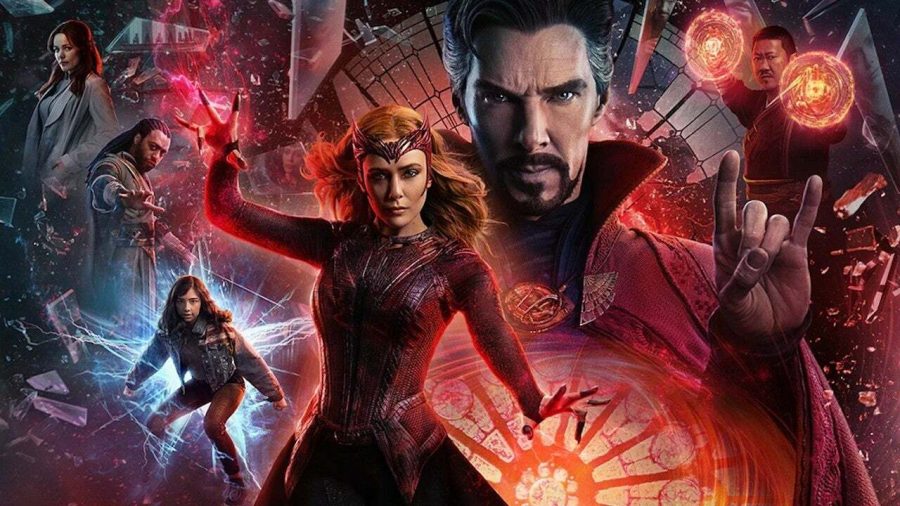Doctor Strange raises more questions than answers
May 23, 2022
After Spider-Man: No Way Home, Marvel fans have been dying to discover what the MCU might bring to the table with Doctor Strange: Multiverse of Madness.
This film takes place a few months after the events of No Way Home, and after shedding some light of how a multiverse incident could occur, the movie follows Doctor Strange as a new problem arises: America Chavez is chased by what seems to be Gargantos, an inter-dimensional demon following her for an unknown reason. It is then revealed that America has the power to travel through the multiverse, but she can’t control it.
In a race to find answers before another multiversal incident, Strange visits Wanda Maximoff who he knows has knowledge about the multiverse. But in attempts to find a solution, he discovers the demon chasing after America was actually sent by Wanda, her intentions being to use America as a tool to reach her two children in another universe even if it means killing America. The movie takes audiences on a ride through the multiverse as Doctor Strange and others help to protect America Chavez and her power from now antagonist Wanda, who has fully become the Scarlet Witch after being corrupted by the Darkhold, the book of the Damned.
This movie sits at an IMDB rating of 7.4/10 as of May 17 with mixed reviews, and I could understand why. Some thought this film would be filled with numerous cameos due to its name. Only a few multiversal characters appear in the movie, both older and new, but they are well incorporated and contribute to what I think was one of the best scenes in the film having to do with a particular universe’s “Illuminati” group, which gave the film more shock value and a darker aspect. The director, Sam Raimi, who is known for directing the first Spider-Man movies in the early 2000s and campy horror movies from the 1980s like Evil Dead, displays his style in the movie with the heightened horror and humor, giving the movie a different and more sinister tone than past Marvel movies, which was refreshing.
Ultimately, this film gives the message that we can’t always have what we long for – in its own harsh but moving ways.
Another thing that was critiqued was the pacing of the film which I could agree felt rushed compared to other Marvel films, many felt this especially about the falling action. It had been reported that 40 minutes of the original product was cut, and it leaves many viewers wondering if any more cameos or backstory could’ve been included in the film.
The plot provides a closer look at what can happen when universes cross, and how it all functions. The movie’s end credits introduce a new character, Clea, and evidence that Strange has been affected by the evil he encounters.
The movie does a good job of taking Marvel fans deeper into Phase 4 of the MCU by opening up ways to introduce popular heroes in future movies. Some viewers may not have liked its limited view into the multiverse, but the movie appears to just be the beginning of the MCU’s involvement in the concept of discovering different universes and characters.









